The Temple of Literature, located in Hanoi, Vietnam, is an iconic symbol of the country’s rich cultural and historical heritage. Established in 1070 during the reign of Emperor Ly Thanh Tong, it was initially dedicated to Confucius (Khong Tu), sages, and scholars.
This ancient site holds great significance as the location of Vietnam’s first national university, the Imperial Academy, founded in 1076. Over centuries, the Temple of Literature has been a place of learning and worship, deeply intertwined with Vietnam’s intellectual and spiritual traditions
Necessary information when visiting the Temple of Literature
The Temple of Literature is situated at No. 58, Quoc Tu Giam Street, Dong Da District, Hanoi. This historical site is easily accessible and well-connected by public transportation. When planning a visit, it is important to note that the temple is a popular tourist destination, attracting both locals and international visitors. The temple’s serene atmosphere, traditional architecture, and lush gardens offer a peaceful retreat from the bustling city life of Hanoi
Temple of Literature entry fee and opening hours
The Temple of Literature charges an entry fee, which is modest and affordable for most visitors. The fee for adults is approximately 70,000 VND (about 2.60 USD), while students is 35,000 VND (about 1.30 USD) but students card required.
The temple is open daily from 8:00 AM to 5:00 PM, with extended hours on weekends and public holidays to accommodate the influx of tourists. It is advisable to visit early in the morning or later in the afternoon to avoid the peak hours and enjoy a more tranquil experience.
Temple of Literature History
The Temple of Literature has a rich and storied history that spans over a millennium. Founded in 1070 by Emperor Lý Thánh Tông, it was initially established as a Confucian temple. Six years later, it became the site of the Imperial Academy, Vietnam’s first national university.
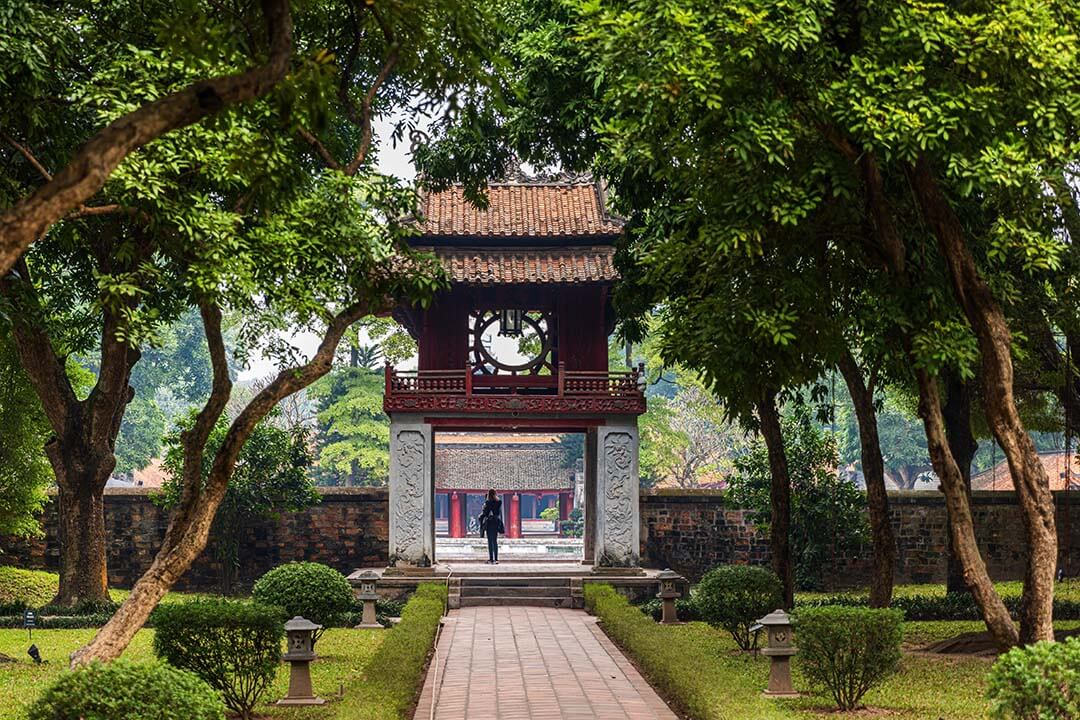
The temple played a crucial role in the education of Vietnamese scholars and mandarins, shaping the intellectual and cultural landscape of the country. Throughout its history, the Temple of Literature has undergone several restorations and renovations, preserving its architectural and historical significance.
Architecture of Temple of Literature
The architecture of the Temple of Literature is a testament to traditional Vietnamese design, featuring intricate carvings, red-tiled roofs, and ornate altars. The layout of the temple is divided into five courtyards, each with its own unique features and significance. The courtyards are connected by pathways and beautifully landscaped gardens, creating a harmonious blend of nature and architecture. The main hall, dedicated to Confucius and his disciples, is adorned with statues and tablets, reflecting the reverence for education and scholarly pursuits in Vietnamese culture
Regulations of the Temple of Literature
Visitors to the Temple of Literature are expected to adhere to certain regulations to preserve the sanctity and historical integrity of the site:
- It is important to dress modestly, covering shoulders and knees, as a sign of respect.
- Photography is allowed in most areas, but it is advisable to check for any restricted zones.
- Loud noises and disruptive behavior are discouraged to maintain the serene ambiance of the temple.
- Additionally, visitors are requested to follow designated pathways and avoid stepping on the grass or touching the ancient artifacts
The number of courtyards of Temple of Literature
The Temple of Literature is composed of five distinct courtyards, each representing a different aspect of Confucian education and philosophy. These courtyards are sequentially arranged, guiding visitors through the temple’s historical and cultural narrative.
The First Courtyard – From Great Portico to Great Middle Gate
The journey through the Temple of Literature begins at the Great Portico, an impressive entrance that sets the tone for the visit. The first courtyard is a spacious area lined with ancient trees, creating a serene environment.
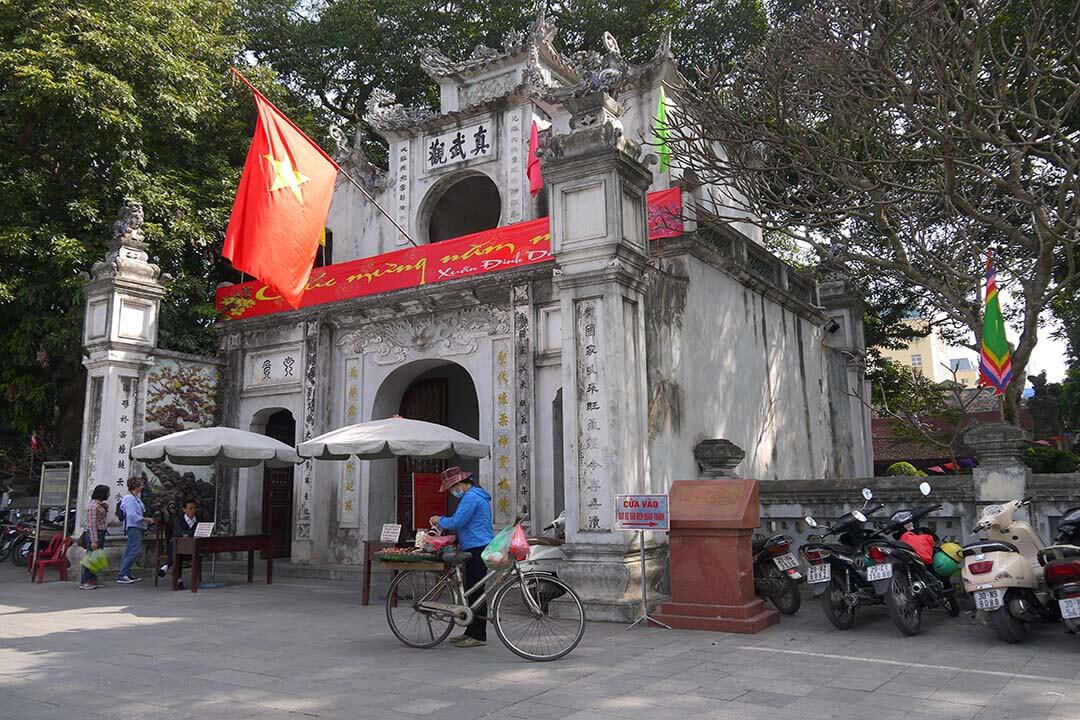
The Great Middle Gate, located at the far end, serves as the entrance to the second courtyard. This initial section of the temple represents the welcoming of visitors and scholars, inviting them to embark on a path of knowledge and enlightenment
The Second Courtyard – Pavilion of Constellation
The second courtyard is dominated by the Pavilion of Constellation, an architectural marvel that symbolizes academic brilliance and success. This pavilion is an elegant two-story structure, featuring intricate wooden carvings and a roof adorned with elaborate decorations.
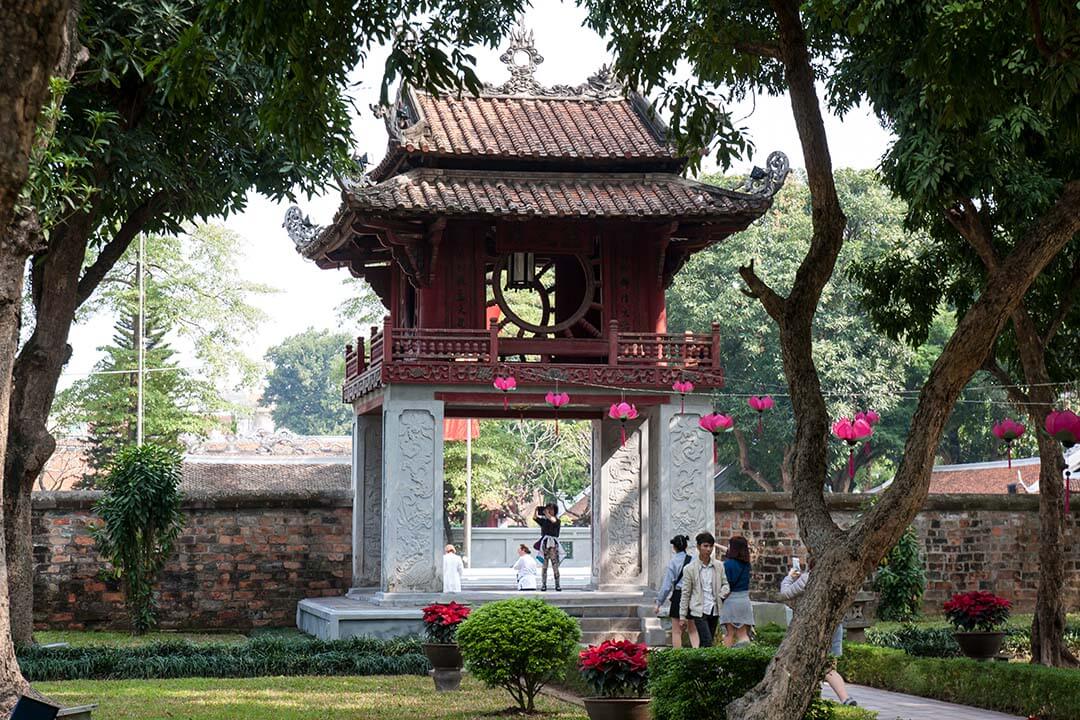
The courtyard surrounding the pavilion is meticulously maintained, with manicured lawns and blooming flowers. It serves as a reminder of the importance of intellectual achievement and the pursuit of excellence in education.
The Third Courtyard – Well of Heavenly Clarity
The third courtyard houses the Well of Heavenly Clarity, a tranquil pond that reflects the sky and surrounding architecture. This courtyard is a place of reflection and contemplation, embodying the purity and clarity of knowledge.
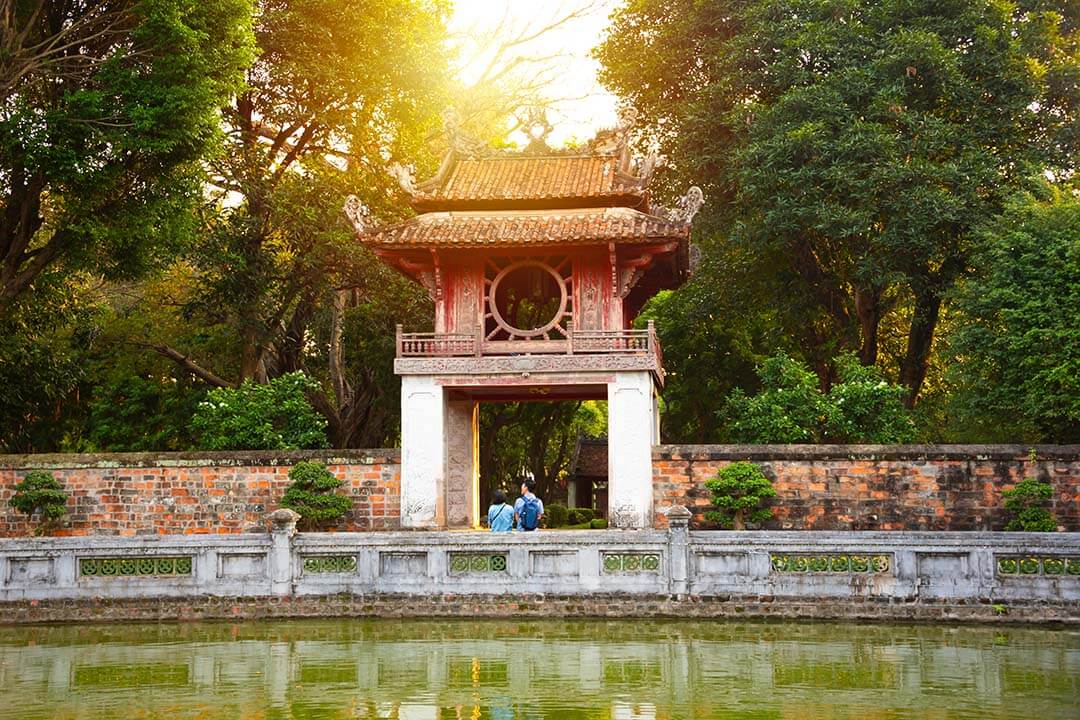
This courtyard has stone tablets, inscribed with the names of successful scholars, line the perimeter of the pond. These tablets, mounted on the backs of stone tortoises, commemorate the achievements of past students and serve as an inspiration for future generations
The Fourth Courtyard – The Gate to Great Success
The fourth courtyard is accessed through the Gate to Great Success, a grand entrance that leads to the heart of the temple. This area is dedicated to the Imperial Academy, Vietnam’s first national university.
The courtyard is home to several important structures, including the House of Ceremonies and the Great House of Ceremonies. These buildings were used for official ceremonies and academic gatherings, reflecting the temple’s role as a center of learning and scholarly excellence.
The Final Courtyard – The Grounds of Imperial Academy
The fifth courtyard, known as the Grounds of Imperial Academy, is the most sacred part of the temple. It contains the main hall dedicated to Confucius and his principal disciples. This hall is richly decorated with statues, altars, and intricate woodwork.
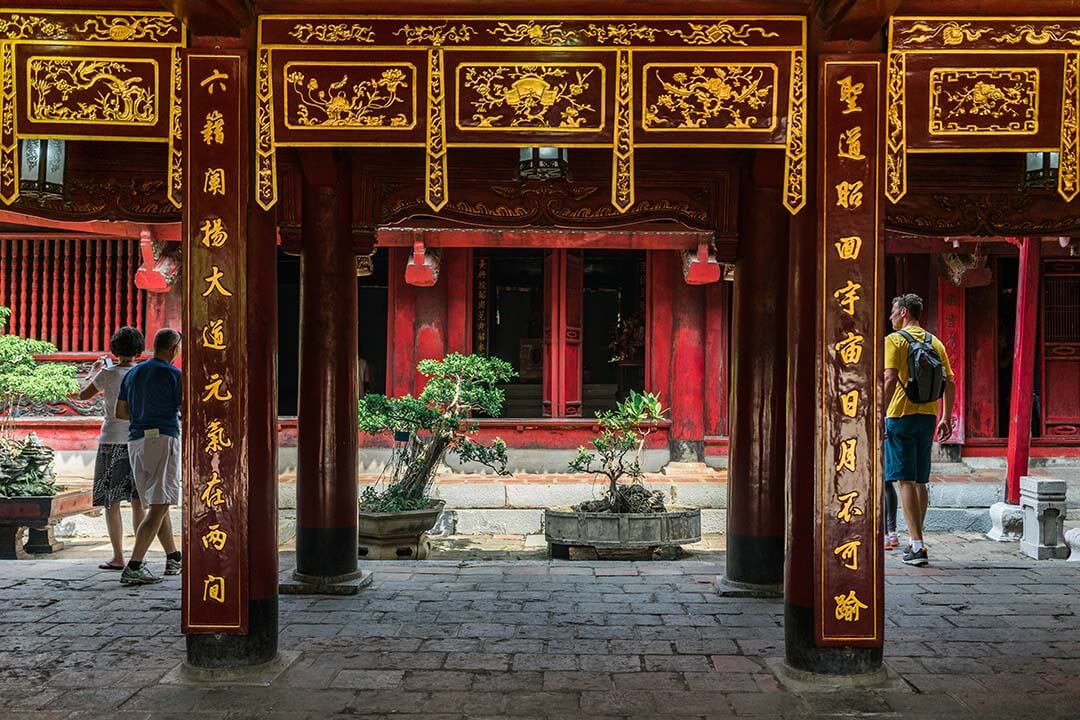
The courtyard also features the House of Tablets, where the names of successful scholars are recorded. This section of the temple represents the culmination of the academic journey, celebrating the achievements of those who have dedicated their lives to the pursuit of knowledge.
3 Hotels near Temple of Literature
For visitors seeking accommodations near the Temple of Literature, there are several excellent options within close proximity.
Clover Hotel (400m)
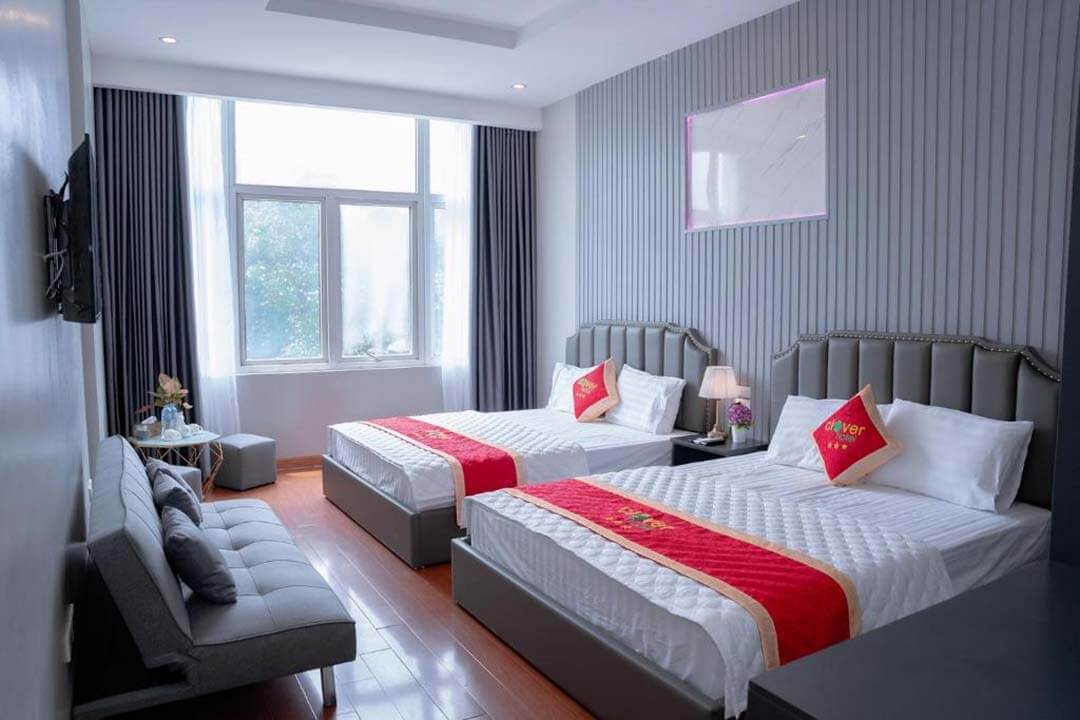
Clover Hotel located at 50 Ton Duc Thang, Cat Linh, Dong Da, Hanoi, Clover Hotel offers convenient access to the Temple of Literature. This hotel provides comfortable rooms, modern amenities, and a welcoming atmosphere. Its central location makes it an ideal choice for tourists looking to explore the cultural and historical attractions of Hanoi.
Grand Mecure Hanoi (800m)
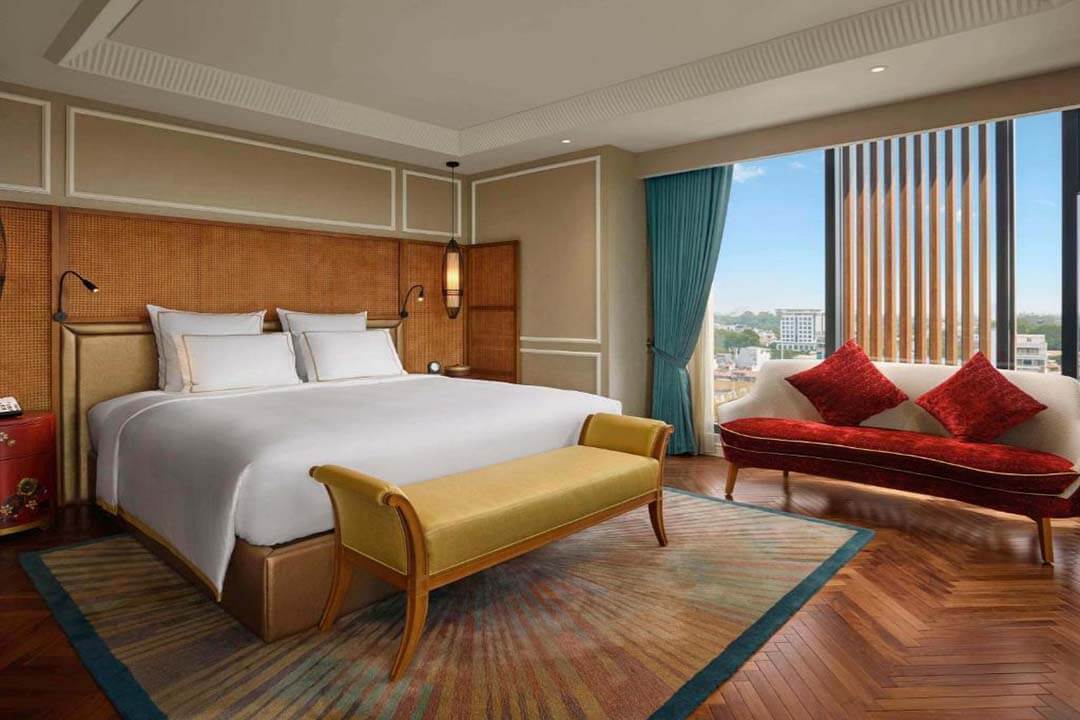
Grand Mecure Hanoi situated at 9 Cat Linh, Quoc Tu Giam, Dong Da, Hanoi, Grand Mecure Hanoi is a luxury hotel offering top-notch services and facilities. Guests can enjoy spacious rooms, a fitness center, and a rooftop bar with panoramic views of the city. The hotel’s proximity to the Temple of Literature and other major attractions makes it a popular choice for travelers.
Eli Rina Hotel and Apartment (1km)

Eli Rina Hotel located at 1/115 Nguyen Khuyen, Van Mieu, Ba Dinh, Hanoi, Eli Rina Hotel and Apartment offers a range of accommodation options, including serviced apartments. The hotel features modern amenities, a cozy ambiance, and easy access to the Temple of Literature. It is an excellent choice for both short-term and long-term stays in Hanoi.
Attractions near Temple of Literature
The Temple of Literature is not only a significant cultural and historical landmark in Hanoi, but it is also surrounded by several other fascinating attractions. These nearby sites offer visitors a deeper understanding of the rich heritage and vibrant life of Vietnam’s capital city. Here are five notable attractions within a short distance from the Temple of Literature.
Imperial Citadel of Thang Long (1.4 km)
The Imperial Citadel of Thang Long is a UNESCO World Heritage Site and a must-visit destination for history enthusiasts. Located just 1.4 km from the Temple of Literature, this ancient site dates back to the 11th century and was the political center of Vietnam for over 1,000 years. The citadel reflects a rich tapestry of Vietnamese history, from the Ly Dynasty through to the Le, Trinh, and Nguyen dynasties.
The expansive complex includes various historical buildings, palaces, and gates. Highlights include the Flag Tower of Hanoi, Doan Mon Gate, and the Kinh Thien Palace. Archaeological excavations have also uncovered artifacts dating back to as early as the 7th century, providing a fascinating glimpse into Vietnam’s past.
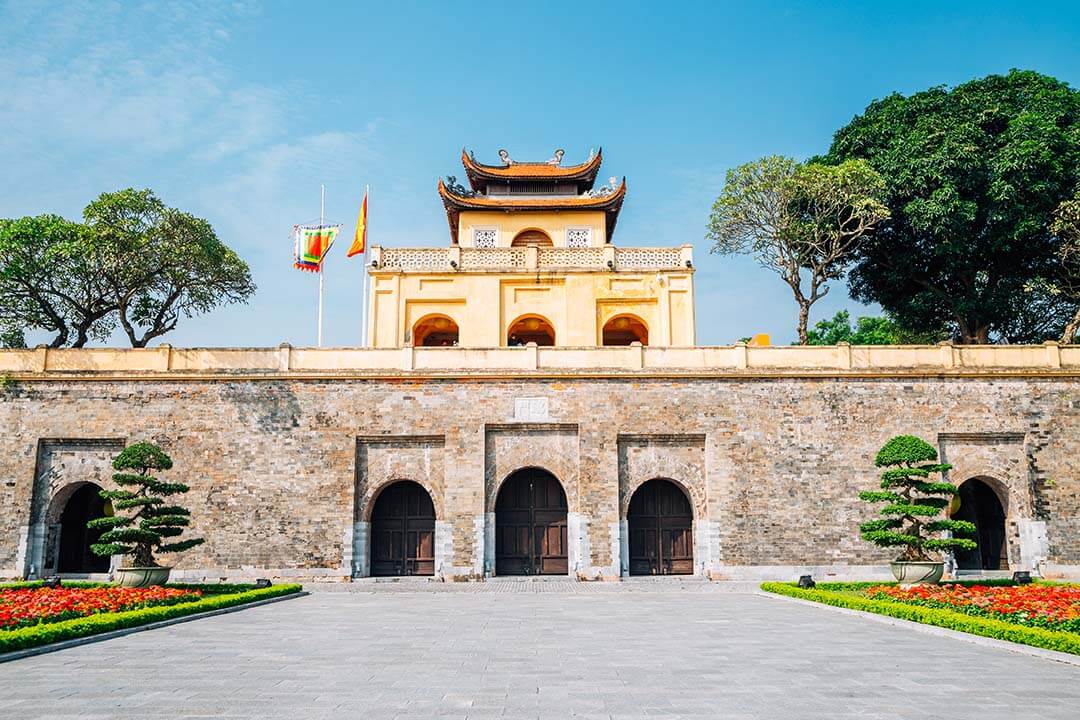
Visitors can explore the well-preserved ruins and restored sections of the citadel, learning about its historical significance through informative displays and exhibits. The Imperial Citadel is not just a static relic but an active archaeological site, where ongoing excavations continue to reveal new discoveries.
Ho Chi Minh Mausoleum (1.7 km)
Situated 1.7 km from the Temple of Literature, the Ho Chi Minh Mausoleum is one of Hanoi’s most important landmarks. It is the final resting place of Ho Chi Minh, the revered leader who led Vietnam to independence from French colonial rule. The mausoleum, an imposing granite structure, stands as a symbol of respect and admiration for “Uncle Ho,” as he is affectionately known.
The mausoleum is located in Ba Dinh Square, where Ho Chi Minh declared Vietnam’s independence in 1945. Visitors can pay their respects to the embalmed body of Ho Chi Minh, which is preserved in a glass case inside the mausoleum. The structure is heavily guarded, and there are strict rules for visitors, including a dress code and prohibition on photography inside the mausoleum.
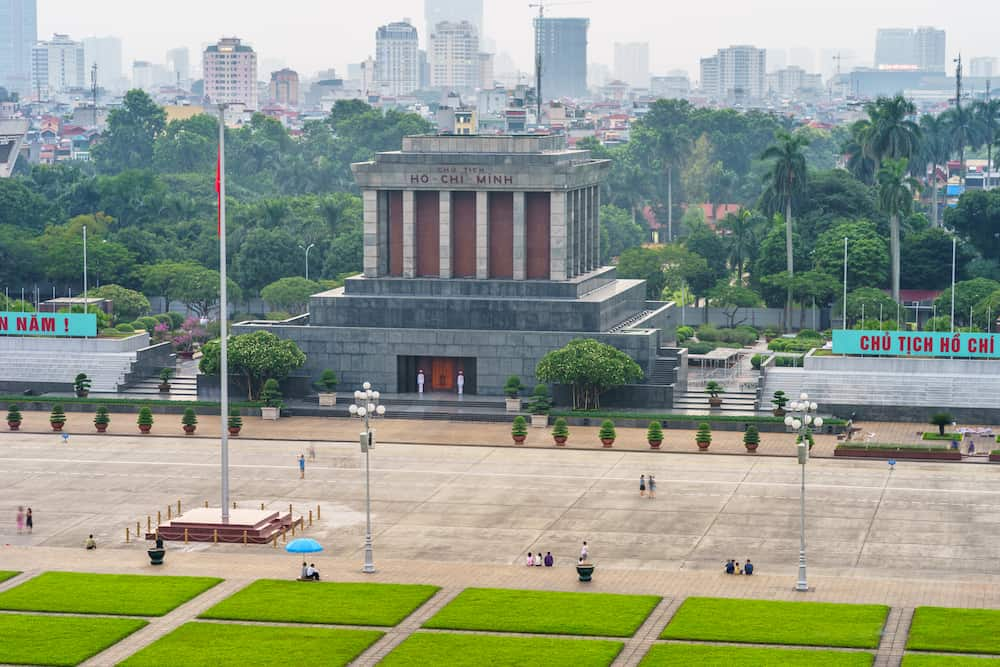
Adjacent to the mausoleum are several other significant sites, including the Ho Chi Minh Museum, which provides a comprehensive overview of his life and legacy, and the Presidential Palace, a beautiful colonial-era building set in lush gardens. The nearby One Pillar Pagoda, an iconic Buddhist temple, is also worth a visit.
St. Joseph’s Cathedral (1.9 km)
Located 1.9 km from the Temple of Literature, St. Joseph’s Cathedral is a stunning example of neo-Gothic architecture in the heart of Hanoi. Built in 1886 by the French colonial government, it is one of the oldest churches in Vietnam and a focal point for the local Catholic community.
The cathedral’s exterior features impressive twin bell towers, reminiscent of Notre-Dame Cathedral in Paris, and its intricate facade is adorned with stained glass windows and elaborate carvings. Inside, the cathedral boasts a high vaulted ceiling, beautiful altars, and a serene atmosphere that invites reflection and prayer.
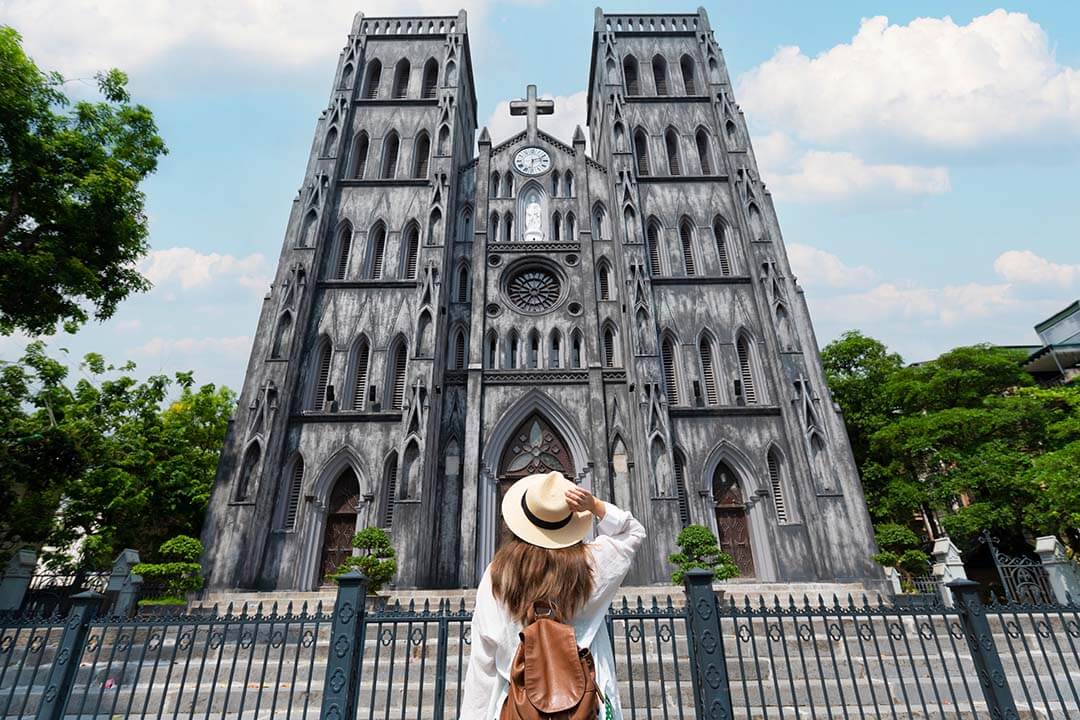
St. Joseph’s Cathedral is not only a place of worship but also a vibrant cultural hub. The area surrounding the cathedral is lively, with numerous cafes, shops, and street vendors. The cathedral square is a popular gathering spot for locals and tourists alike, especially during weekends and holidays.
Masses are held regularly, and visitors are welcome to attend. The cathedral is particularly enchanting during Christmas, when it is beautifully decorated, and the surrounding area is transformed into a festive market.
Hoan Kiem Lake (2.3 km)
Hoan Kiem Lake, located 2.3 km from the Temple of Literature, is a central feature of Hanoi’s cityscape and a favorite spot for both locals and tourists. The lake, also known as Sword Lake, is steeped in legend and history. According to local lore, Emperor Le Loi returned a magical sword to the Golden Turtle God in the lake after defeating the Chinese Ming dynasty, hence its name.
The lake’s serene waters are surrounded by tree-lined walkways, making it an ideal place for leisurely strolls, jogging, or simply relaxing on one of the many benches. In the center of the lake is Turtle Tower, a small pagoda that adds to the lake’s picturesque charm.
One of the most iconic structures on Hoan Kiem Lake is the Ngoc Son Temple, situated on Jade Island. The temple is connected to the lake’s shore by the bright red Huc Bridge, which means “Morning Sunlight Bridge.” The temple complex includes several ancient buildings and relics, and it offers a peaceful retreat from the bustling streets of Hanoi.
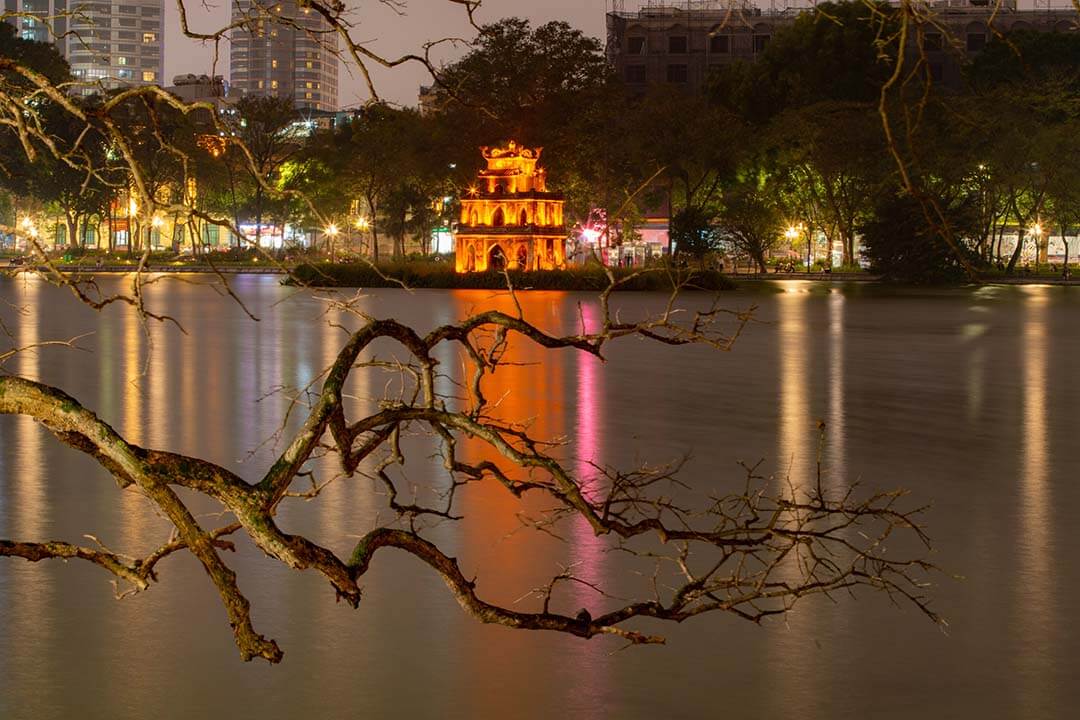
Hoan Kiem Lake is also a cultural and social hub. The surrounding area is vibrant with cafes, shops, and street performances. On weekends, the streets around the lake are closed to traffic, creating a pedestrian zone where locals and tourists enjoy music, dance, and various activities.
Hanoi Opera House (2.7 km)
The Hanoi Opera House, located 2.7 km from the Temple of Literature, is an architectural masterpiece and a cultural icon of the city. Built in 1911 by the French colonial administration, the opera house was modeled after the Palais Garnier in Paris and stands as a testament to Hanoi’s colonial history and cultural heritage.
The exterior of the Hanoi Opera House is characterized by its grand columns, ornate balconies, and intricate detailing, reflecting French neoclassical design. Inside, the opera house boasts a lavish interior with a large auditorium, stunning chandeliers, and luxurious furnishings.
The Hanoi Opera House hosts a variety of performances, including classical music concerts, ballet, opera, and traditional Vietnamese theatre. It serves as a premier venue for cultural events and attracts both local and international artists. Attending a performance at the opera house is a unique cultural experience, offering a glimpse into the artistic traditions of Vietnam.
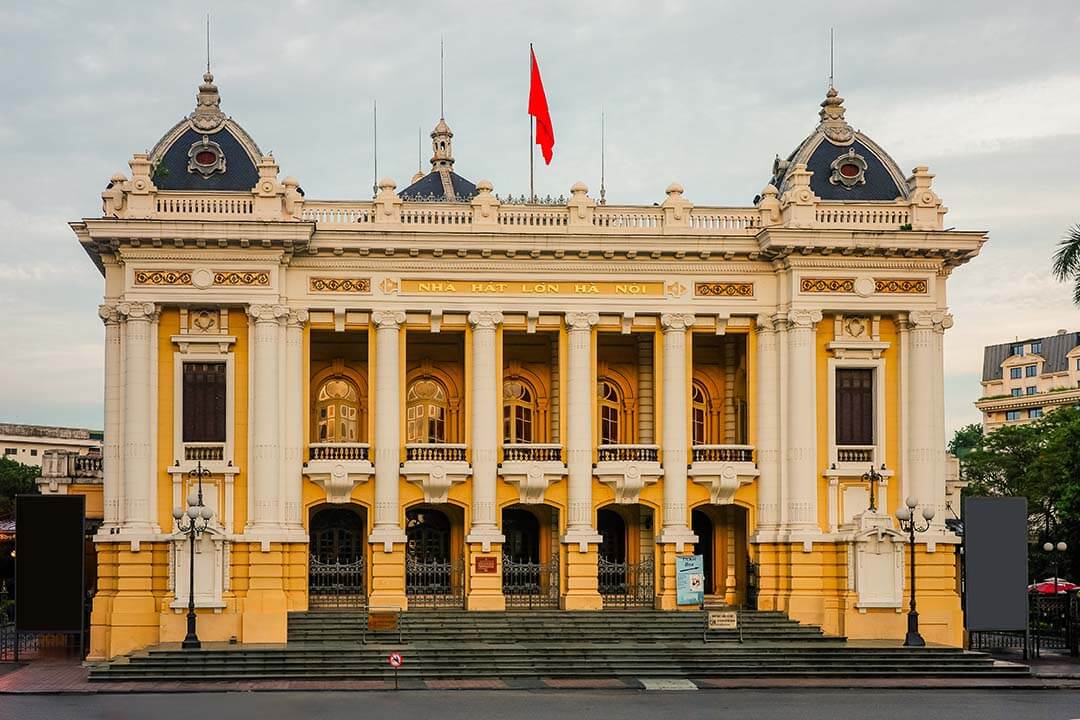
Visitors can also explore the area around the opera house, which is home to several high-end hotels, restaurants, and cafes. The nearby Trang Tien Plaza is a popular shopping destination, and the French Quarter, with its wide boulevards and colonial architecture, offers a charming atmosphere for a leisurely stroll.
Here are the things you need to know about the Temple of Literature. Visit Vietnam Travel Tips daily to discover more about the beautiful country of Vietnam.


